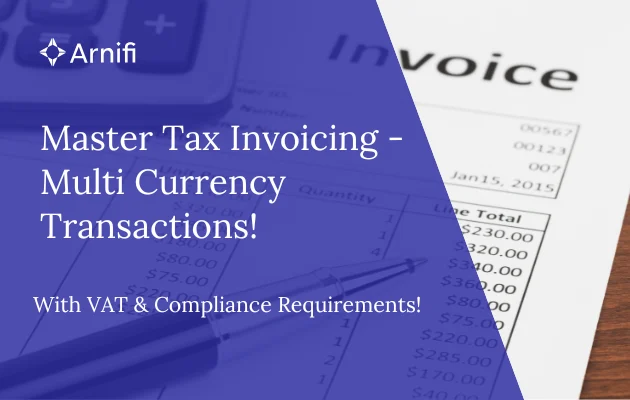Mastering this definitely takes time! Filing a tax invoice that involves multiple currency exchanges, Value-Added Tax (VAT), and other compliance requirements requires careful attention to detail to ensure accuracy and adherence to regulations. This article provides in-depth insights into tax invoicing practices, currency considerations, VAT compliance, and e-invoicing regulations. Here are key considerations.
Comprehensive Tax Invoice Details
The invoice starts with the details of the buyer or the parties involved in the transaction. A standard tax invoice includes:
- Names and addresses of both buyer and seller
- Description of goods or services provided
- Quantities and pricing
- Applicable taxes
- Payment terms and due dates
- Any other information required by local regulations.
International Transaction Considerations
When issuing VAT invoices for international transactions, adjustments may be necessary based on the locations of the customer and seller. Key considerations include specifying the transaction currency and including the applicable exchange rate, especially if filing in a different currency.
Currency Specification
Clearly state the currency used for the transaction on the invoice. This transparency helps both parties understand the financial terms.
Exchange Rate Inclusion
When transactions involve foreign currencies, it’s essential to include the exchange rate applied. This is particularly important if the invoice is issued in a currency different from that of the tax reporting.
Understanding VAT – Value Added Tax
As the name suggests ‘value added tax’ is some amount charged to goods or services apart from the original cost. Therefore the charges added for these from the point of production to the sales point. In a few Asia-Pacific countries, it is known as goods and services tax (GST). The business collects the tax from the customer and is responsible for sending (remitting) the tax to the appropriate government agency at a set due date.
Once your business has reached the minimum threshold or VAT registration (AED 375,000 in UAE). The first step to registration is to determine where you are required to collect VAT and register with the appropriate tax authority. Once registered, you can begin collecting and remitting VAT.
VAT Display in Local Currency
While invoices can be issued in any currency, VAT must often be displayed in the local reporting currency. Tax authorities may require the use of specific exchange rates, such as those published daily by the national bank or monthly by the tax authority.
Accurate Exchange Rate Application
Utilize the exchange rate provided by the supplier to ensure precise tax reporting and recovery. Discrepancies between the exchange rates used by suppliers and customers can lead to under-reporting, over-recovery of VAT, and compliance issues during tax audits.
E-Invoicing Compliance
Many countries have implemented electronic invoicing (e-invoicing) mandates to enhance VAT compliance and reduce fraud. These mandates often specify format standards and system requirements, including digital invoice storage. Staying informed about and compliant with these regulations is crucial for businesses operating internationally.
How does Arnifi Manage it?
Our accounting experts handle this with utmost detail to precision. We help our clients by:
- Ensuring accurate currency conversion and exchange rate application.
- Assisting in VAT registration and compliance based on jurisdiction-specific thresholds.
- Implementing e-invoicing solutions that align with local regulatory standards.
- Providing audit-ready financial documentation to avoid penalties and discrepancies.
With our digital-first approach, we streamline tax compliance, allowing businesses to focus on growth and expansion rather than regulatory burdens. Whether you’re a startup or an established enterprise, Arnifi ensures your invoicing and tax processes are accurate, compliant, and hassle-free.
Also Read: Understand how VARA works to avoid tax penalties on virtual assets.
 4 MIN READ
4 MIN READ 




